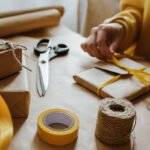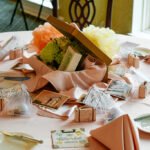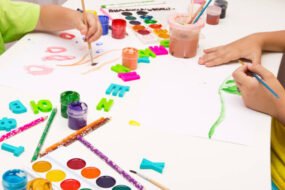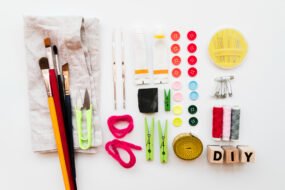
Jewelry making is a creative and rewarding hobby that allows you to express your personal style and create unique pieces for yourself or as gifts. Whether you’re a beginner or an experienced crafter, this DIY guide will help you get started on your jewelry-making journey.
1. Why Make Your Own Jewelry?
Creating your own jewelry has several benefits:
- Personalization: Design pieces that perfectly match your style or the style of the person you’re making them for.
- Cost-Effective: Save money by making custom jewelry instead of buying expensive store-bought items.
- Creative Outlet: Jewelry making is a fun and fulfilling way to express your creativity.
2. Essential Tools and Materials
Before you begin, gather the basic tools and materials needed for jewelry making:
a. Tools
- Pliers: Round-nose pliers for making loops, flat-nose pliers for gripping and flattening, and wire cutters for cutting wire.
- Beading Needles: Used for threading small beads onto string or wire.
- Jewelry Wire: Available in various gauges, wire is essential for creating structure in your pieces.
- Crimping Tool: Used to secure crimps, which hold components of your jewelry in place.
- Ruler or Measuring Tape: To measure lengths of wire, chain, or string.
b. Materials
- Beads: Available in a wide variety of materials, including glass, metal, wood, and gemstones.
- Chains: Choose from different styles and materials, such as gold, silver, or brass, to create necklaces or bracelets.
- Clasps: Lobster clasps, toggle clasps, and magnetic clasps are popular choices for finishing your jewelry.
- Jump Rings: Small metal rings used to connect different components, such as attaching a charm to a chain.
- Earring Hooks: Essential for making earrings, available in various metals to match your design.
3. Getting Started: Simple Jewelry Projects
a. Beaded Bracelets
Beaded bracelets are a great project for beginners. Here’s how to make one:
- Choose Your Beads: Select beads that complement each other in color, size, and material.
- Measure and Cut the String: Cut a piece of jewelry wire or elastic string about 10 inches long.
- String the Beads: Thread the beads onto the string in your desired pattern. You can alternate colors or sizes for a unique look.
- Finish with a Clasp: If using wire, secure the ends with crimps and attach a clasp. For elastic string, simply tie a secure knot and trim any excess.
b. Wire-Wrapped Rings
Wire-wrapped rings are stylish and customizable. Here’s a simple method to create one:
- Cut the Wire: Cut about 6-8 inches of jewelry wire, depending on your finger size and design.
- Wrap the Wire: Place a bead or gemstone in the center of the wire and wrap the wire around it several times.
- Form the Ring: Wrap the wire around a ring mandrel or a cylindrical object (like a marker) to shape it into a ring.
- Secure the Ends: Twist the wire ends together and tuck them neatly under the ring to prevent snagging.
c. Dangle Earrings
Dangle earrings are elegant and easy to make. Follow these steps:
- Select Your Beads: Choose beads or charms that will hang nicely from the earring hooks.
- Attach to Eye Pins: Slide the beads onto eye pins and use round-nose pliers to create a loop at the top of the pin.
- Connect to Earring Hooks: Use jump rings to attach the eye pins to the earring hooks.
- Close the Jump Rings: Ensure the jump rings are securely closed so your earrings don’t fall apart.
4. Advanced Techniques
Once you’re comfortable with the basics, you can explore more advanced techniques:
a. Wire Weaving
Wire weaving involves intertwining multiple strands of wire to create intricate designs. This technique is often used in making pendants and bracelets.
b. Metal Stamping
Metal stamping allows you to personalize jewelry with letters, numbers, or designs. Use a hammer and metal stamps to imprint your design onto metal blanks.
c. Resin Casting
Resin casting is a versatile technique that lets you create custom pendants, charms, and other jewelry pieces. Mix resin with colors or inclusions like glitter or dried flowers, then pour it into molds to harden.
5. Tips for Success
a. Plan Your Design
Before you start, sketch out your design or lay out your materials to visualize how the finished piece will look.
b. Practice Patience
Jewelry making can be intricate work, so take your time and don’t rush through the steps.
c. Experiment with Materials
Don’t be afraid to mix different materials, like combining beads with metal charms or using leather cord instead of chain.
d. Keep Your Workspace Organized
A tidy workspace will help you keep track of small components and tools, making the process smoother.
6. Troubleshooting Common Issues
a. Loose Beads
If your beads are slipping, try using smaller crimp beads or double crimping for added security.
b. Uneven Loops
Practice making loops with your round-nose pliers until you can consistently create even, circular loops.
c. Tarnishing Metals
Store your metal components in airtight bags to prevent tarnishing, or use anti-tarnish strips to keep them shiny.
7. Conclusion
Jewelry making is a fun and fulfilling hobby that allows you to create beautiful, personalized pieces. Whether you’re making a simple beaded bracelet or experimenting with advanced techniques like wire weaving or resin casting, the possibilities are endless. So grab your tools and materials, and start crafting your own stunning jewelry today!
Happy crafting!








